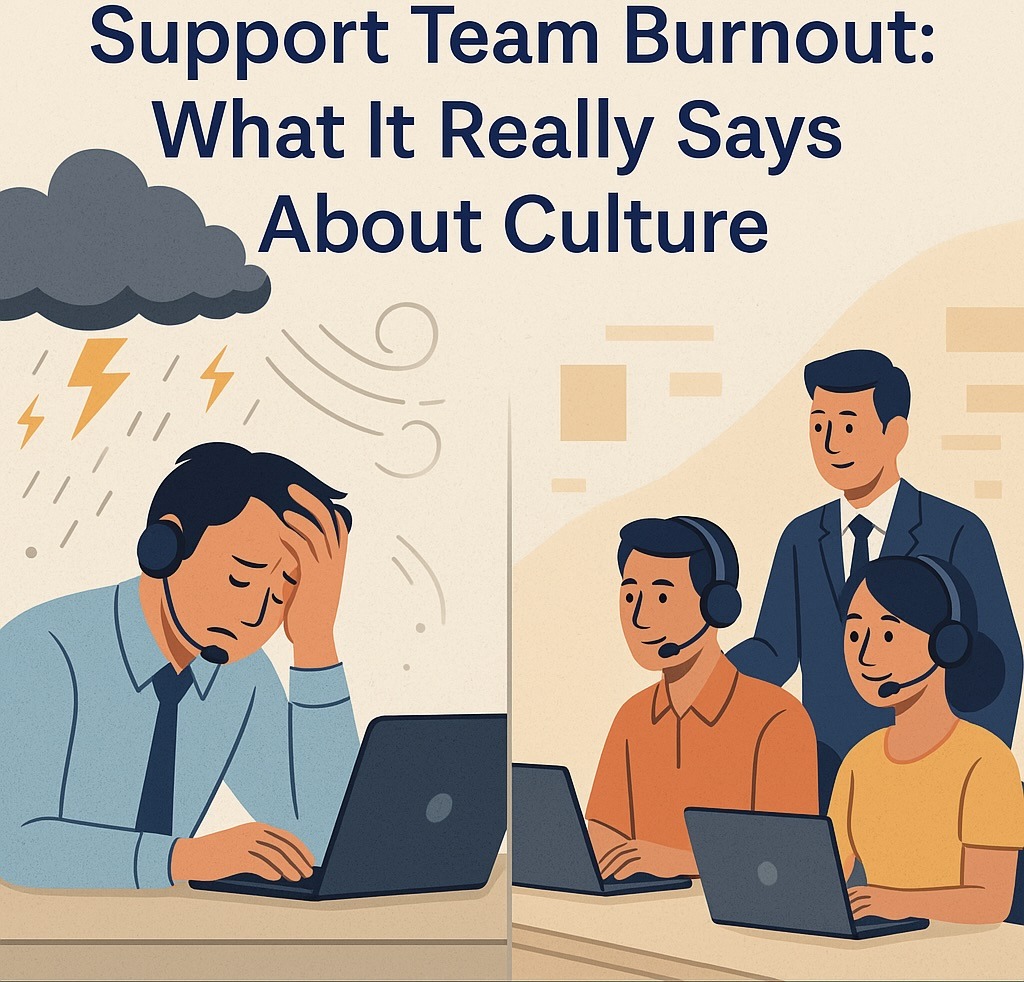
Customer support often gets treated as a function. Either as a department, a helpdesk or a queue to manage. But in reality, it’s much more than that. Support is a living reflection of your company’s values, your leadership style and your internal culture.
When done well, it becomes a strategic advantage. When neglected, it quietly erodes trust, morale and retention both internally and externally.
The way your support team communicates, escalates, resolves issues and collaborates with others says more about your culture than any internal values deck ever could.
Support Is a Cultural Mirror
You can’t fake culture in support. When customers are upset, confused or frustrated, your support team becomes your brand’s voice. The way they respond reflects how much trust, training and authority they’ve been given.
If they’re empowered, informed and respected — it shows.
If they’re under pressure, out of the loop or restricted by rigid processes — that shows too.
Support exposes how your business handles:
- Pressure
- Feedback
- Responsibility
- Empathy
In short, support doesn’t just represent your culture. It reveals it.
What a Healthy Customer Support Culture Looks Like
A strong customer support culture isn’t about scripts or speed. It’s about connection, collaboration, and consistency.
Here are a few signs you’re getting it right:
- Cross-functional respect – Support is included in product and ops conversations, not just pulled in when there’s a problem.
- Agent empowerment – Teams are trusted to make decisions, not just follow rules.
- Aligned actions and values – The tone of your brand matches the experience your customers have.
- Growth over blame – Mistakes are addressed, but they’re also treated as learning opportunities and not as reasons to point fingers.
When support teams feel heard, supported and connected to the bigger picture, they don’t just resolve issues, they reinforce your brand.
Support as Strategy, Not Silo
If you want support to reflect a strong culture, it has to be part of the business strategy, not isolated from it.
That means:
- Sharing customer insights across departments
- Including support leaders in roadmap planning
- Using support metrics to shape training, onboarding and retention strategies
- Recognising the emotional and strategic labour support teams perform every day
Support shouldn’t be reactive. It should be part of how you shape your customer experience and internal identity.
Make Culture Your Differentiator
In crowded markets, product features can be copied. But culture? That’s much harder to replicate. Your support culture is often the first and most lasting impression your customers will have of your brand.
So ask yourself:
- Does your support culture reflect your company’s best qualities?
- Or does it reveal cracks you’ve been trying to ignore?
Want to Build a Support Culture That Strengthens Your Brand?
We help both new and growing businesses align their support teams with their values. Building operations that scale trust, not just increase ticket volume.
You can also grab our free guide on how to prevent support team burnout. A key first step in creating a healthy customer support culture.
👉 Download the guide or get in touch here to explore how we can help.
Transforming Potential into Performance

